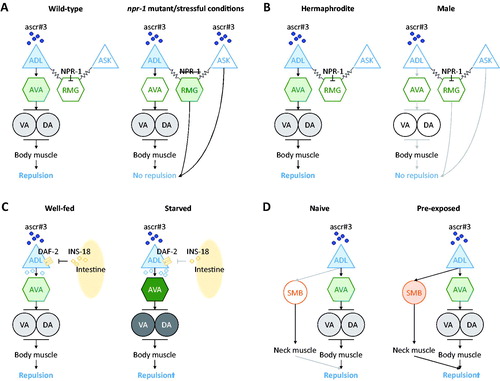Figures & data
Table 1 Structure and function of scaroside pheromones in C. elegans.
Figure 1. Models for behavioral plasticity of ascr#3 avoidance. (A) In npr-1(lf) hermaphrodite, ASK and RMG antagonize ADL chemical synapses and decrease ascr#3 avoidance. (B) In wild-type male, ADL ascr#3 response is decreased due to sexual dimorphism. ASK and RMG circuit antagonizes ADL output to further reduce ascr#3 avoidance. (C) In starved conditions, secretion of INS-18 from the intestine is decreased, which activates the DAF-2 signaling of ADL, resulting in increase in synaptic release from ADL to downstream neurons, and promotes enhanced ascr#3 avoidance. (D) In pre-exposed condition, ADL-SMB synaptic activities that are inactive in naïve animals is altered to promote enhanced ascr#3 avoidance.

